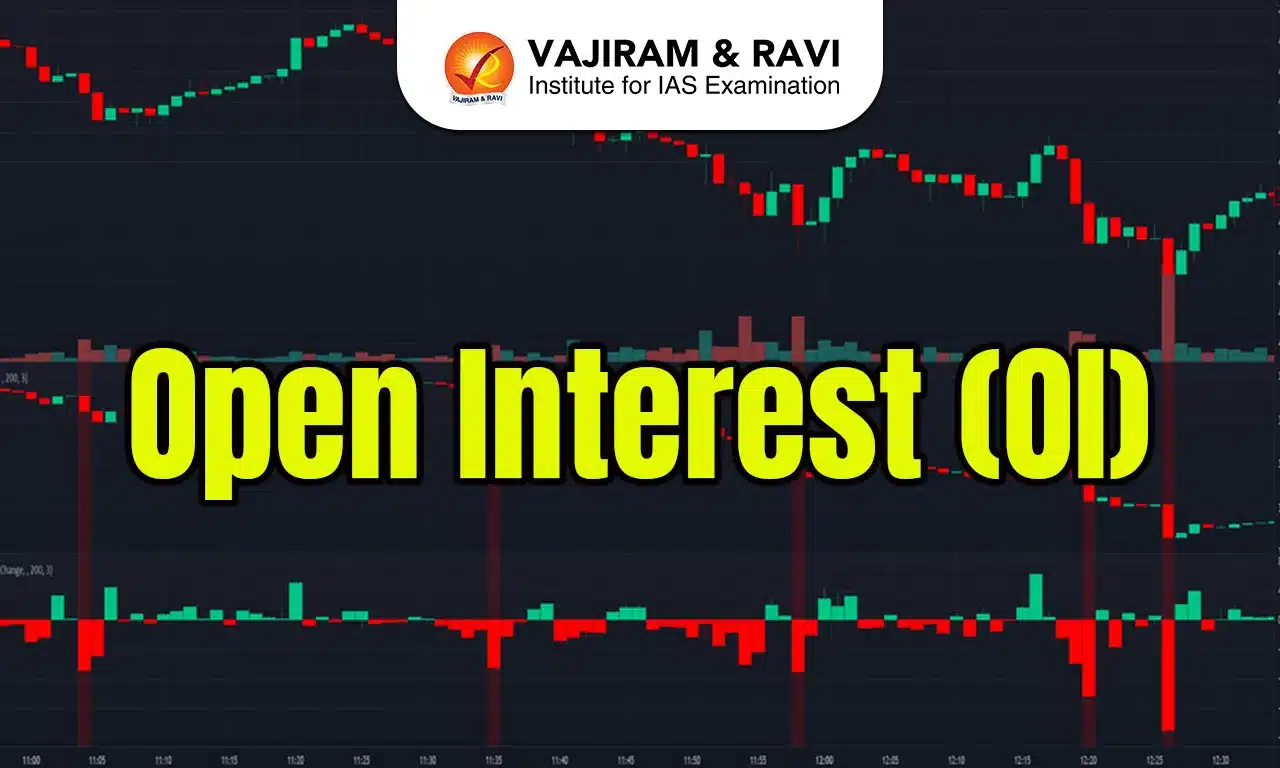Open Interest Latest News
SEBI recently announced a sweeping overhaul of its equity F&O framework, introducing a new Future Equivalent (FutEq) method to assess open interest more accurately.
About Open Interest
- It is a term commonly used in Futures and Options (F&O) trading, where the number of open contracts changes on a daily basis.
- In simple terms, every trade has two sides: a buyer and a seller. Whenever an F&O contract is traded, it is considered open until one of the parties closes their position through offsetting.
- Open Interest is the total number of active options and futures contracts that have not yet been settled against an asset at a given time in the trading arena.
- It is primarily used as an indicator to identify market positions of securities that have not yet been closed for an unknown reason.
- To summarise, it is referred to as a measure of liquidity in conjunction with market activity.
- Like any other security traded in the market, it is subject to market changes.
- When new contracts are created or opened, it rises. A rise in the number of them indicates that there are more buyers and sellers for a specific security.
- It decreases when positions in existing contracts are closed out by buyers (or holders) and sellers.
- Investors might make conclusions about the day’s market activity by monitoring changes in the open interest at the end of each trading day.
- Importance of Open Interest in Stock Market:
- Open interest plays a significant role in helping options traders understand the liquidity of an option.
- It is a measure of market activity. It indicates if a market will trendor be range-bound, often known as choppy.
- An increase in open interest indicates that the number of new positions is increasing. This suggests that the market is being traded actively and is more likely to trend, while decreasing open interest indicates money flowing out of the market.
- After a sustained price gain, a levelling off of Open Interest is usually an early indicator of the end of a bull market phase.
- To summarise, this type of indicator can be a significant piece of information when evaluating a possible investment.
What are Futures and Options (F&O)?
- F&O are the major types of stock derivatives trading in a share market.
- These are contracts signed by two parties for trading a stock asset at a predetermined price on a later date.
- Such contracts try to hedge market risks involved in stock market trading by locking in the price beforehand.
- F&O are contracts which derive their price from an underlying asset (known as underlying), such as shares, stock market indices, commodities, ETFs, and more.
- Futures contracts obligate the buyer to purchase an underlying asset, while the seller must deliver it at a predetermined price and date.
- In options contracts, the buyer has the right, but not the obligation, to buy or sell the underlying asset at a predetermined price and date, while the seller must honour the contract if the buyer chooses to exercise their option.
- F&O basics allows individuals to reduce future risk with their investment through pre-determined prices.
- However, since a direction of price movements cannot be predicted, it can cause substantial profits or losses if a market prediction is inaccurate.
- Typically, individuals well versed with the operations of a stock market primarily participate in such trades.
Open Interest FAQs
Q1: What does “Open Interest” (OI) represent in Futures & Options trading?
Ans: The total number of active contracts not yet settled.
Q2: When does Open Interest increase?
Ans: When new contracts are created or opened.
Q3: A leveling off of Open Interest after a sustained price gain typically signals what?
Ans: The end of the bull market phase.
Source: NIE
Last updated on December, 2025
→ Check out the latest UPSC Syllabus 2026 here.
→ Join Vajiram & Ravi’s Interview Guidance Programme for expert help to crack your final UPSC stage.
→ UPSC Mains Result 2025 is now out.
→ UPSC Notification 2026 is scheduled to be released on January 14, 2026.
→ UPSC Calendar 2026 is released on 15th May, 2025.
→ The UPSC Vacancy 2025 were released 1129, out of which 979 were for UPSC CSE and remaining 150 are for UPSC IFoS.
→ UPSC Prelims 2026 will be conducted on 24th May, 2026 & UPSC Mains 2026 will be conducted on 21st August 2026.
→ The UPSC Selection Process is of 3 stages-Prelims, Mains and Interview.
→ UPSC Result 2024 is released with latest UPSC Marksheet 2024. Check Now!
→ UPSC Prelims Result 2025 is out now for the CSE held on 25 May 2025.
→ UPSC Toppers List 2024 is released now. Shakti Dubey is UPSC AIR 1 2024 Topper.
→ UPSC Prelims Question Paper 2025 and Unofficial Prelims Answer Key 2025 are available now.
→ UPSC Mains Question Paper 2025 is out for Essay, GS 1, 2, 3 & GS 4.
→ UPSC Mains Indian Language Question Paper 2025 is now out.
→ UPSC Mains Optional Question Paper 2025 is now out.
→ Also check Best IAS Coaching in Delhi
Tags: open interest prelims pointers upsc current affairs upsc prelims current affairs

















